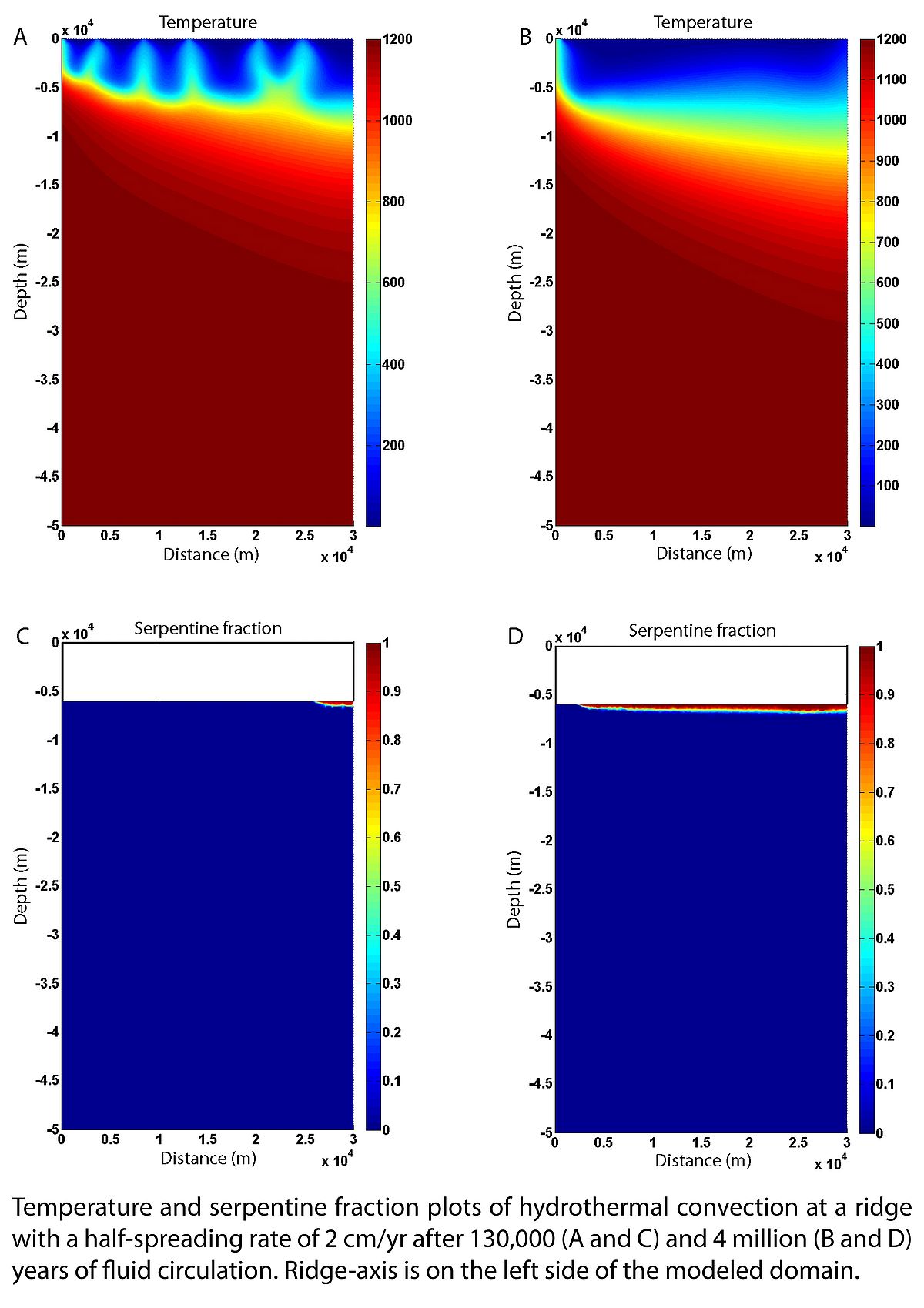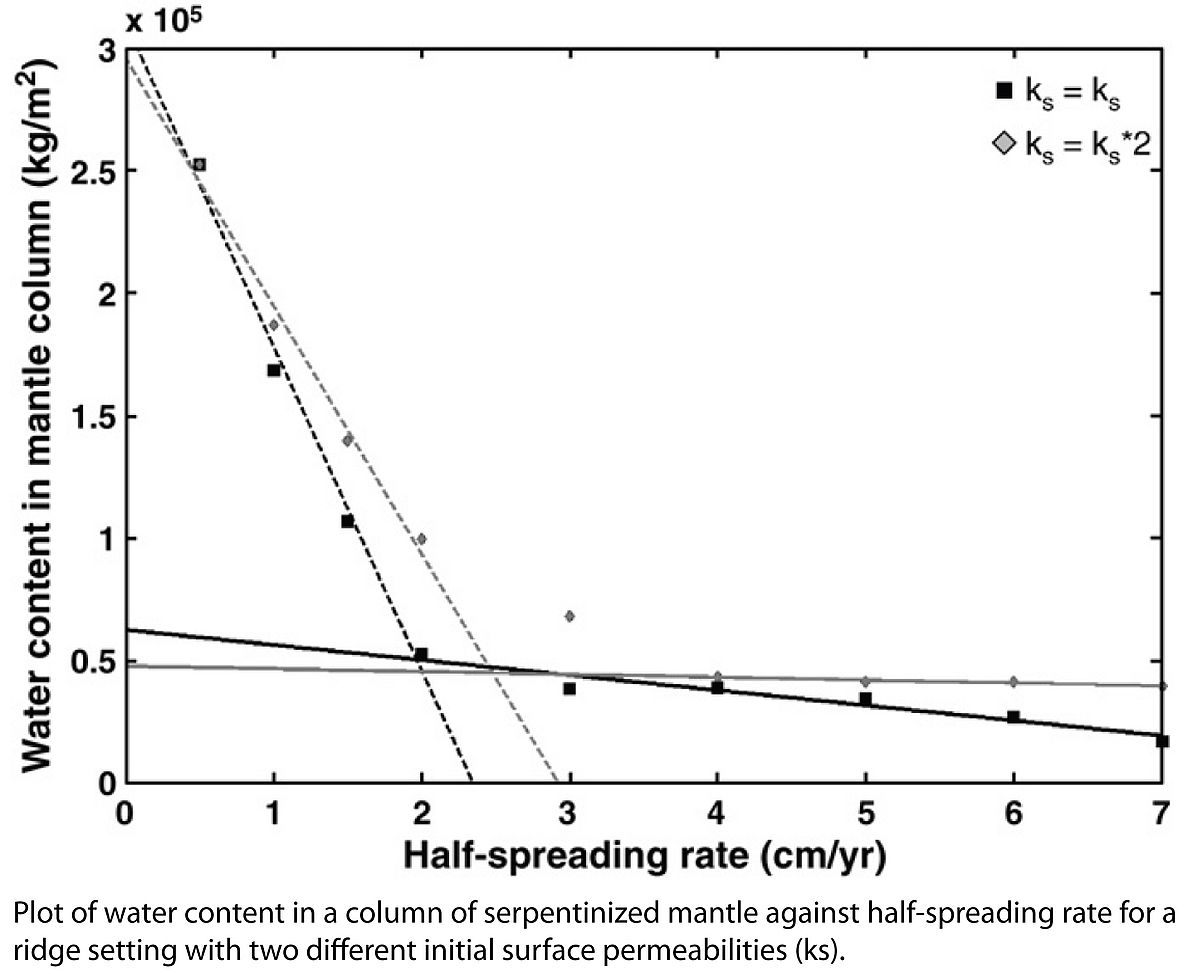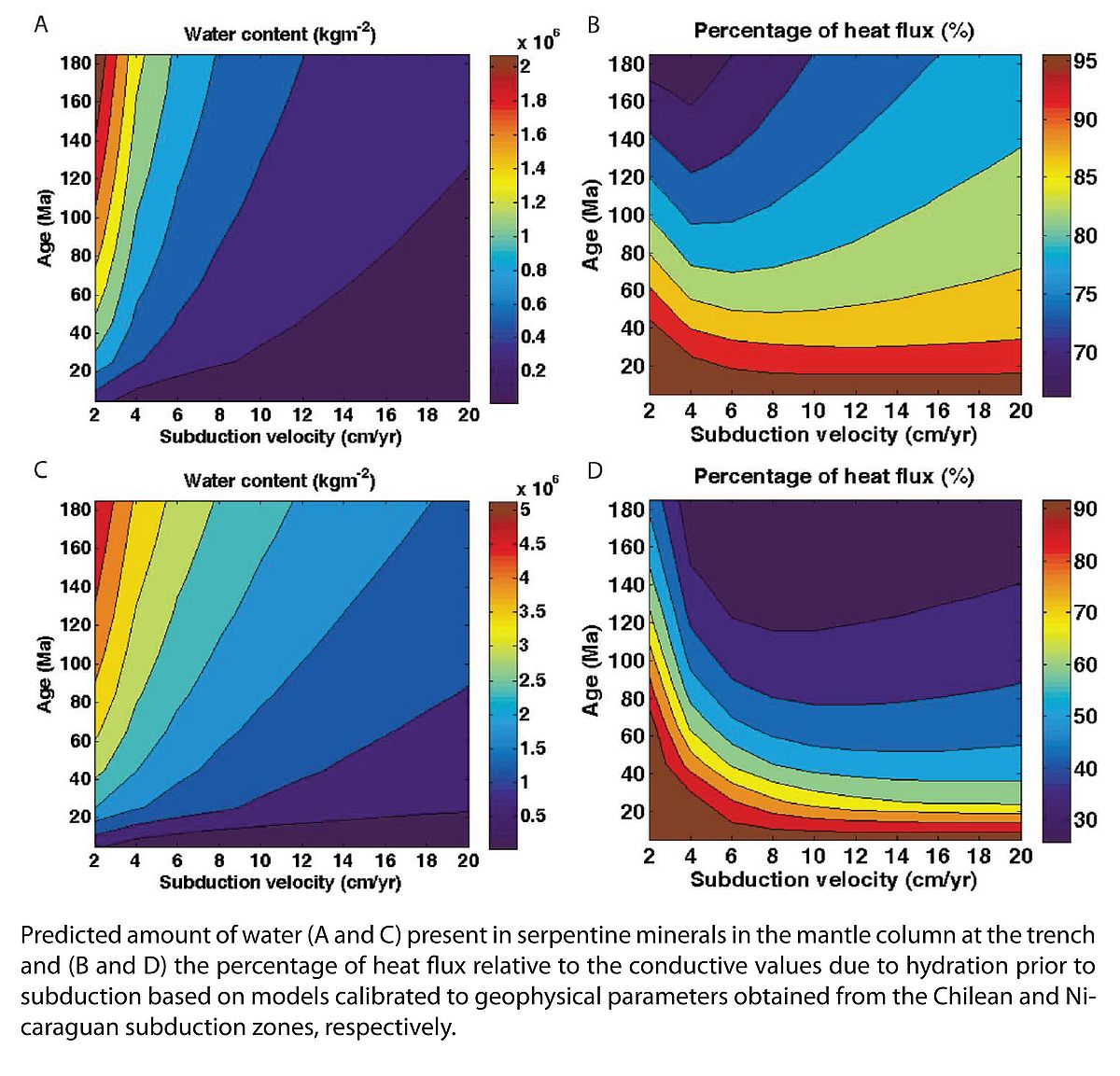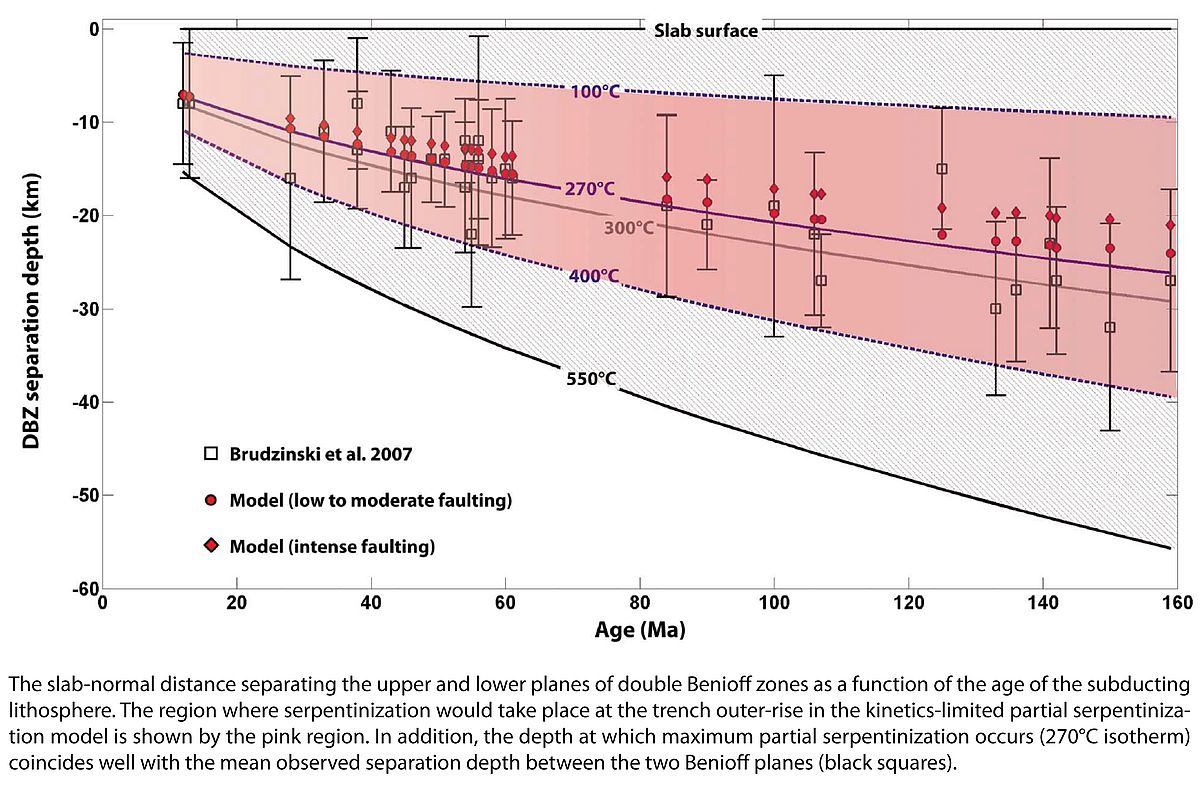Modeling fluid-rock interactions within the oceanic lithosphere
The ageing and alteration of oceanic lithosphere is closely linked to fluid flow and the associated hydration and alteration reactions. At mid-ocean ridges, hydrothermal convection leads to enhanced cooling of the ocean floor and to early hydration of the crust and mantle. At ocean trenches, prior to plate subduction, trench outer-rise bend-faulting may provide pathways for seawater to deeply penetrate into the ocean floor causing additional hydration of the crust and cold lithospheric mantle. Fluid flow through the ocean floor thereby links the plate tectonic cycle to the hydrosphere and represents a key element exchange mechanism between the solid Earth and the global ocean while also altering both the chemical and physical properties of the hydrated lithologies. One of the most important reactions that affect the mantle is serpentinization. The process of serpentinization results in a drastic decrease in the density (up to 40%), seismic velocity and brittle strength as well as water uptake of up to 13 wt.% of the ultramafic rock. Although, the total degree of hydration/alteration of the oceanic crust and overlying deep-sea sediments is fairly well constrained, the degree of deep mantle hydration as a consequence of serpentinization reactions is less known.
In order to better constrain serpentinization during hydrothermal fluid flow, we have developed a two dimensional, FEM model that solves three coupled, time-dependent equations: (i) mass-conserving Darcy flow equation, (ii) energy conserving heat transport equation and (iii) serpentinization rate of olivine with feedbacks to temperature (exothermic reaction), fluid consumption and variations in porosity and permeability (volume changes). The numerical model has been calibrated to geophysical observations where available and is used to explore not only the water budget within the mantle but also shed light on various physical feedbacks of serpentinization on the mantle lithosphere.
The numerical experiments for mid-ocean ridges show that -
- strong feedbacks exist between mantle hydration reactions and hydrothermal flow. The key factor that controls the evolution of serpentinization in the mantle at mid-ocean ridges, however, is the implemented reduction of porosity/permeability as serpentinization reaches completion.
- The average water content of the mantle is a strong function of spreading rate. We find two distinct trends: slow spreading ridges show high degrees of hydration that rapidly drop with increasing rate. Fast spreading ridges show only limited water contents which do not greatly depend on the spreading rate.
The numerical experiments for subduction zones show that -
- the degree of serpentinization at the trench outer-rise is a function of plate age, subduction velocity and reaction kinetics
- the observed spacing of double Benioff zones is consistent with the temperature dependence of serpentinization reaction kinetics, i.e., the average depth of the second seismic zone correlates to the depth of maximum serpentinization prior to subduction
- some of the heat flux reduction may be explained by serpentinization reactions at depth but hydrothermal convection is necessary to explain the reduced surface heat flux at the trench outer-rise.
Contact: Dr. Karthik Iyer
References
Iyer, K., Rüpke, L. H., Phipps Morgan, J. & Grevemeyer, I. Controls of faulting and reaction kinetics on serpentinization and double Benioff zones. Geochem. Geophys. Geosyst. 13, Q09010, doi:10.1029/2012gc004304 (2012).
Iyer, K., Rüpke, L. H. & Morgan, J. P. Feedbacks between mantle hydration and hydrothermal convection at ocean spreading centers. Earth and Planetary Science Letters 296, 34-44, doi:10.1016/j.epsl.2010.04.037 (2010).






